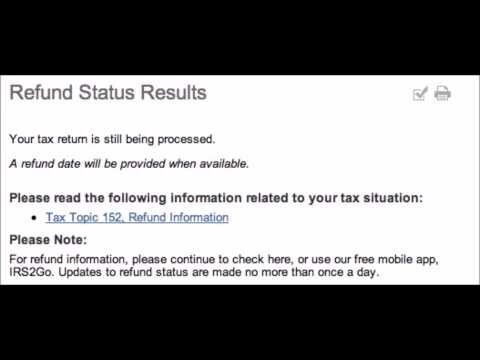Contents:


The retained earnings are the part of the earning not distributed by the company and are reported in the owners’ section of the company as accumulated retained earnings. We can see that the summation of all the components for the company United States steel corporations is $3,941, which is the total owners’ equity of the company. The stockholder’s equity can be calculated by deducting the total liabilities from the company’s total assets.
Paid-In Capital: Examples, Calculation, and Excess of Par Value — Investopedia
Paid-In Capital: Examples, Calculation, and Excess of Par Value.
Posted: Sun, 19 Feb 2023 08:00:00 GMT [source]
Retained earnings is part of shareholder equity and is the percentage of net earnings not paid to shareholders as dividends. Shareholder equity is the owner’s claim after subtracting total liabilities from total assets. Total assets can be categorized as either current or non-current assets. Current assets are those that can be converted to cash within a year, such as accounts receivable and inventory.
This financial metric is frequently used by analysts to determine a company’s general financial health. An asset’s book value is equal to its carrying value on the balance sheet, and companies calculate it by netting the asset against its accumulated depreciation. Conceptually, stockholders’ equity is useful as a means of judging the funds retained within a business.
Free Tools
As with all investment analysis, ROE is just one metric highlighting only a portion of a firm’s financials. It is critical to utilize a variety of financial metrics to get a full understanding of a company’s financial health before investing. ROE will always tell a different story depending on the financials, such as if equity changes because of share buybacks or income is small or negative due to a one-time write-off. Return on equity is a financial ratio that shows how well a company is managing the capital that shareholders have invested in it. ROE is often used to compare a company to its competitors and the overall market. A company’s equity position can be found on its balance sheet, where there is an entry line for total equity on the right side of the table.
5 Low Price-to-Book Stocks to Add to Your Kitty — Yahoo Finance
5 Low Price-to-Book Stocks to Add to Your Kitty.
Posted: Tue, 21 Feb 2023 08:00:00 GMT [source]
Stockholders’ equity refers to the assets remaining in a business once all liabilities have been settled. INVESTMENT BANKING RESOURCESLearn the foundation of Investment banking, financial modeling, valuations and more. In finance, a return is the profit or loss derived from investing or saving. In short, it’s not only important to compare the ROE of a company to the industry average but also to similar companies within that industry.
Examples of Stockholders Equity Formula
Since equity accounts for total assets and total liabilities, cash and cash equivalents would only represent a small piece of a company’s financial picture. Companies may return a portion of stockholders’ equity back to stockholders when unable to adequately allocate equity capital in ways that produce desired profits. This reverse capital exchange between a company and its stockholders is known as share buybacks. Shares bought back by companies become treasury shares, and their dollar value is noted in the treasury stock contra account. For this reason, many investors view companies with negative shareholder equity as risky or unsafe investments. The rate earned on stockholders’ equity, also known as the return on stockholders’ equity or just return on equity, expresses a relationship between a company’s net income and its stockholders’ equity.

Long-term assets are assets that cannot be converted to cash or consumed within a year (e.g. investments;property, plant, and equipment; and intangibles, such as patents). Equity Formula With ExamplesEquity is the amount of money left for the shareholders or owners to rightfully claim after all the liabilities & debts are paid off. This is determined by deducting a company’s total liabilities from its total assets for a given period.
What Is Shareholder Equity (SE) and How Is It Calculated?
Above is data for calculating the Shareholder’s equity of company SDF Ltd. The above given is the data for calculating the Shareholder’s equity of company PRQ Ltd. The ROE of the entire stock market as measured by the S&P 500 was 6.95% in the fourth quarter of 2020, as reported by CSI Market. In order to participate, a user must comply with all eligibility requirements and make a qualifying purchase with their Stock-Back® Card. All funds used for this Program will be taken from your Stash Banking account†. Stash through the “Diversification Analysis” feature does not rebalance portfolios or otherwise manage the Personal Portfolio Account for clients on a discretionary basis.
For mature companies that have been consistently profitable, the retained earnings line item can contribute the highest percentage of shareholders’ equity. In these types of scenarios, the management team’s decision to add more to its cash reserves causes its cash balance to accumulate. Shareholder equity reported by PepsiCo increased between the 2020 and 2021 fiscal years despite the economic challenges stemming from the COVID-19 pandemic.
There is no guarantee that any strategies discussed will be effective. change in net working capitalholders’ equity is the book value of shareholders’ interest in a company; these are the components in its calculation. Next, the “Retained Earnings” are the accumulated net profits (i.e. the “bottom line”) that the company held onto as opposed to paying dividends to shareholders.
What Is the Average ROE for U.S. Stocks?
In contrast, early-stage companies with a significant number of promising growth opportunities are far more likely to keep the cash (i.e. for reinvestments). Other Comprehensive Income The other comprehensive income line item consists of miscellaneous items such as foreign currency translation adjustments , unrealized gains on short-term securities, etc. If the retained earnings balance turns negative, then the line item is titled “Accumulated Deficit”. Treasury StockTreasury stock refers to previously issued shares that were later repurchased by the company, i.e. stock buybacks.
Capital GainsCapital gain refers to the profit resulting from selling a capital asset or investment at a price higher than its purchase price. Board Of DirectorsBoard of Directors refers to a corporate body comprising a group of elected people who represent the interest of a company’s stockholders. The board forms the top layer of the hierarchy and focuses on ensuring that the company efficiently achieves its goals.

But in the case that it’s negative, that means its debt and debt-like obligations outnumber its assets. When a company’s shareholder equity ratio approaches 100%, it means that the company has financed almost all of its assets with equity capital instead of taking on debt. Equity capital, however, has some drawbacks in comparison with debt financing. It tends to be more expensive than debt, and it requires some dilution of ownership and giving voting rights to new shareholders. Aside from stock components, the SE statement also includes sections that report retained earnings, unrealized gains and losses and contributed capital. The retained earnings portion reflects the percentage of net earnings that were not paid to shareholders as dividends and should not be confused with cash or other liquid assets.
Read on to learn what it is, how it works, and how to determine a particular company’s stockholders’ equity. The fact that retained earnings haven’t been distributed doesn’t mean they’re necessarily still available to be distributed. In the final section of our modeling exercise, we’ll determine our company’s shareholders equity balance for fiscal year ending 2021 and 2022. Often referred to as paid-in capital, the “Common Stock” line item on the balance sheet consists of all contributions made by the company’s equity shareholders. From the example above we can see that both the way of calculating the shareholders’ equity of the company provides the same result. The calculation for Shareholders’ equity for the company is also presented in the excel sheet attached.
- Paid-in Share CapitalPaid in Capital is the capital amount that a Company receives from investors in exchange for the stock sold in the primary market, including common or preferred stock.
- Equity is also known as shareholder’s equity and is easily available as a line item in the balance sheet.
- To see how this is calculated in practice, here’s an example of what a hypothetical company’s balance sheet might look like, including assets, liabilities, and stockholders’ equity.
- For instance, at the end of FY 2019, Procter & Gamble reported a net income of $4 billion and total shareholders’ equity of $47.6 billion.
- The lower the ratio result, the more debt a company has used to pay for its assets.
- If applicable, your Stash banking account is a funding account for purposes of the Advisory Agreement.
You may subsequently choose to open one or more investment advisory account. To begin investing on Stash, you must be approved from an account verification perspective and open a brokerage account. To be eligible to receive a Stock Reward through stock party, you must complete the account registration process and open an individual taxable brokerage account («Personal Portfolio») that is in good standing. The par value of issued stock is an arbitrary value assigned to shares in order to fulfill state law. The par value is typically set very low and is unrelated to the issue price of the shares or their market price.
ROE can also be calculated at different periods to compare its change in value over time. By comparing the change in ROE’s growth rate from year to year or quarter to quarter, for example,investors can track changes in management’s performance. When utilizing ROE to compare companies, it is important to compare companies within the same industry, as with all financial ratios.
To calculate ROE, one would divide net income by shareholder equity. Market analysts and investors prefer a balance between the amount of retained earnings that a company pays out to investors in the form of dividends and the amount retained to reinvest back into the company. Stash does not represent in any manner that the circumstances described herein will result in any particular outcome. While the data and analysis Stash uses from third party sources is believed to be reliable, Stash does not guarantee the accuracy of such information.
Total liabilities consist of current liabilities and long-term liabilities. Current liabilities are debts that are due for repayment within one year, such as accounts payable and taxes payable. Long-term liabilities are obligations that are due for repayment in periods beyond one year, including bonds payable, leases, and pension obligations. Shareholder equity is a company’s owner’s claim after subtracting total liabilities from total assets. At some point, accumulated retained earnings may exceed the amount of contributed equity capital and can eventually grow to be the main source of stockholders’ equity. The value of $65.339 billion in shareholders’ equity represents the amount left for stockholders if Apple liquidated all of its assets and paid off all of its liabilities.

The ratio indicates management’s effectiveness in generating a return on the shareholders’ invested capital. Stockholders’ equity is part of a company’s balance sheet, while net income is part of the income statement. An alternative calculation of company equity is the value of share capital and retained earnings less the value of treasury shares. The equity of a company, or shareholders’ equity, is the net difference between a company’s total assetsand itstotal liabilities. A company’s equity is used in fundamental analysis to determine its net worth. To see how this is calculated in practice, here’s an example of what a hypothetical company’s balance sheet might look like, including assets, liabilities, and stockholders’ equity.
What Is a Balance Sheet? U.S. News — U.S News & World Report Money
What Is a Balance Sheet? U.S. News.
Posted: Tue, 24 May 2022 07:00:00 GMT [source]
Nothing in this article should be considered as a solicitation or offer, or recommendation, to buy or sell any particular security or investment product or to engage in any investment strategy. No part of this material may be reproduced in any form, or referred to in any other publication, without express written permission. Stash does not provide personalized financial planning to investors, such as estate, tax, or retirement planning. Investment advisory services are only provided to investors who become Stash Clients pursuant to a written Advisory Agreement. Stash assumes no obligation to provide notifications of changes in any factors that could affect the information provided. This information should not be relied upon by the reader as research or investment advice regarding any issuer or security in particular.
Look for the stockholders’ equity subtotal in the bottom half of a company’s balance sheet; this document already aggregates the required information. Stockholder’s Equity is used for the calculation of book value of shares of the company. It is used to see how market value is priced with reference to the book value of shares of the company. In other words, if ABC Widgets liquidated all of its assets to pay off its debt, the shareholders would retain 75% of the company’s financial resources. Coca-Cola , PepsiCo’s largest rival, also appears to have weathered the shock. It reported about $19.3 billion in stockholder equity for the full 2020 fiscal year.
The company provides shares of the company in exchange for the money given by the people to the company. Hence, people holding shares of the company are called as Shareholder or Stockholder. As owners, shareholders or stockholder are liable for sharing all the profit and losses of the company. The expanded accounting equation is derived from the accounting equation and illustrates the different components of stockholder equity in a company. The shareholder equity ratio is used to get a sense of the level of debt that a public company has taken on. Locate the company’s total assets on the balance sheet for the period.